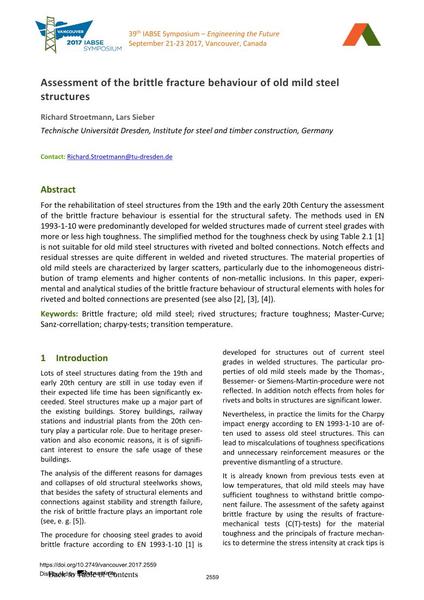Assessment of the brittle fracture behaviour of old mild steel structures

|
|
|||||||||||
Détails bibliographiques
| Auteur(s): |
Richard Stroetmann
(Technische Universität Dresden, Institute for steel and timber construction, Germany)
Lars Sieber (Technische Universität Dresden, Institute for steel and timber construction, Germany) |
||||
|---|---|---|---|---|---|
| Médium: | papier de conférence | ||||
| Langue(s): | anglais | ||||
| Conférence: | IABSE Symposium: Engineering the Future, Vancouver, Canada, 21-23 September 2017 | ||||
| Publié dans: | IABSE Symposium Vancouver 2017 | ||||
|
|||||
| Page(s): | 2559-2566 | ||||
| Nombre total de pages (du PDF): | 8 | ||||
| Année: | 2017 | ||||
| DOI: | 10.2749/vancouver.2017.2559 | ||||
| Abstrait: |
For the rehabilitation of steel structures from the 19th and the early 20th Century the assessment of the brittle fracture behaviour is essential for the structural safety. The methods used in EN 1993-1-10 were predominantly developed for welded structures made of current steel grades with more or less high toughness. The simplified method for the toughness check by using Table 2.1 [1] is not suitable for old mild steel structures with riveted and bolted connections. Notch effects and residual stresses are quite different in welded and riveted structures. The material properties of old mild steels are characterized by larger scatters, particularly due to the inhomogeneous distri- bution of tramp elements and higher contents of non-metallic inclusions. In this paper, experi- mental and analytical studies of the brittle fracture behaviour of structural elements with holes for riveted and bolted connections are presented (see also [2], [3], [4]). |
||||
